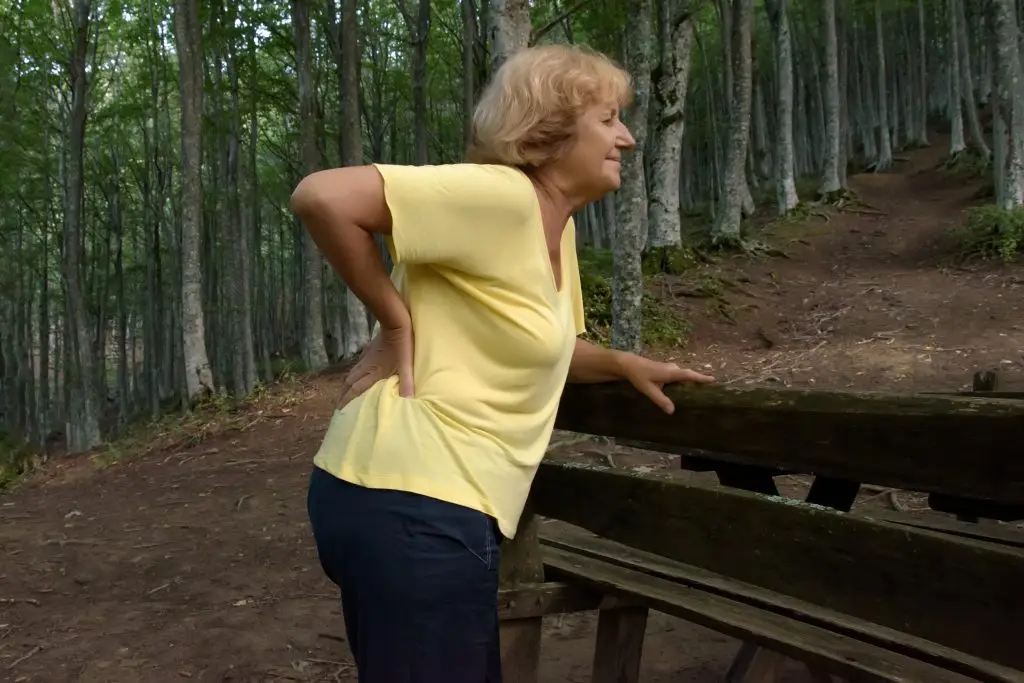Sciatic nerve pain is unpredictable. Just when you think you’ve figured out the triggers and found a way to avoid them, a new irritation creeps in, adding another item to your “don’t” list. Managing sciatica can feel like aiming at a moving target, which is why many people struggle to find long-lasting, effective relief methods.
Whether you’ve explored physical therapy in the past or are simply looking for gentle, accessible ways to reduce your symptoms, movement therapy can provide relief to some. That’s where walking comes in. It’s simple and easy to get started because it doesn’t require any special equipment or skills. But does it actually help with sciatic nerve pain? Or could walking potentially make your condition worse?
Sciatica symptoms
Sciatica isn’t one-size-fits-all, and the symptoms can vary significantly depending on the cause and severity of the irritation to your sciatic nerve. Some symptoms make any kind of movement feel unbearable, while others might improve when you get moving.
Symptoms that may prevent walking
If you’ve experienced sciatica, you know that some flare-ups take you off your feet entirely. Symptoms that make walking difficult or inadvisable include:
- Excruciating, sharp pain radiating down one leg
- Intense lower back pain when standing or walking upright
- Weakness or numbness in the legs that compromises your balance and safety
- Sudden, shooting pain at every step, making even a short walk feel unmanageable
Listen to your body when it comes to attempting movement while you’re currently experiencing sciatica pain. These symptoms and others indicate rest and pain management may be more important than getting up and about.
Symptoms that might improve with movement
On the flip side, gradual movement might be able to help ease less intense sciatic discomfort, or be helpful in strengthening the leg and back muscles for future pain reduction. Some symptoms that could be helped by walking include:
- Mild tingling or numbness that feels better as blood circulates through the area.
- Discomfort that worsens with extended sitting or lying down.
- Radiating pain that feels less severe with gentle, rhythmic motion.
In both cases, the key is learning to feel your own symptoms and respond to how movement affects your current experience.
Does walking help sciatica nerve pain?
Yes, walking can help relieve sciatic nerve pain in some cases, but it depends on the individual and their specific situation.
The benefits of walking for sciatica include:
- Promoting circulation through the legs and body
- Strengthening muscles around the spine
- Enhancing mobility and function of joints
As we’ve mentioned previously, walking is also freely available and comes with the numerous benefits of getting more exercise in your routine.
However, that doesn’t mean it’s a cure-all. If walking worsens your symptoms or feels intolerable, stop and seek advice from a healthcare provider or physical therapist.
Here are a few ideas for making walking as comfortable as possible with sciatica:
- Walk on even surfaces to avoid aggravating the nerve.
- Maintain good posture by keeping your back straight and your shoulders relaxed.
- Use supportive footwear to cushion your steps and reduce foot strain.
- Start with short walks and gradually increase your duration as you build comfort and strength.
Sciatica treatment options besides exercise
Walking is far from the only way to incorporate movement into your treatment plan for sciatica problems. Depending on the severity and root cause of your condition, a well-rounded treatment plan could include:
- Manual physical therapy: Tailored exercises and stretches designed to relieve pressure on the sciatic nerve are key parts of manual therapy. A Panther Physical Therapist will work with you regularly to address your specific pain points and limitations.
- Joint mobilization: Having a Physical Therapist elevate, stretch, and generally mobilize certain joints can identify pain points and begin to improve symptoms.
- Low-impact exercise: Even more gentle exercises are available, from using an elliptical machine to swimming or doing water aerobics.
- Posture training: Poor posture often contributes to sciatica. Working with a specialist to improve your sitting, standing, and walking posture can alleviate strain on your spine and nerve.
Sciatica treatment isn’t one-size-fits-all, which is why working with a healthcare professional or physical therapist is so important.
Physical therapy for sciatica nerve pain in Pittsburgh
If walking no longer helps your sciatica, or if your symptoms have started to feel unmanageable, it may be time to explore professional treatment options. At Panther Physical Therapy, we specialize in treating complex conditions like sciatica and are passionate about pursuing the type of care that actually brings you relief.
Learn more about the advanced options for sciatica nerve pain t hat physical therapy can provide by calling one of our Pittsburgh clinics or by requesting an appointment online today.
